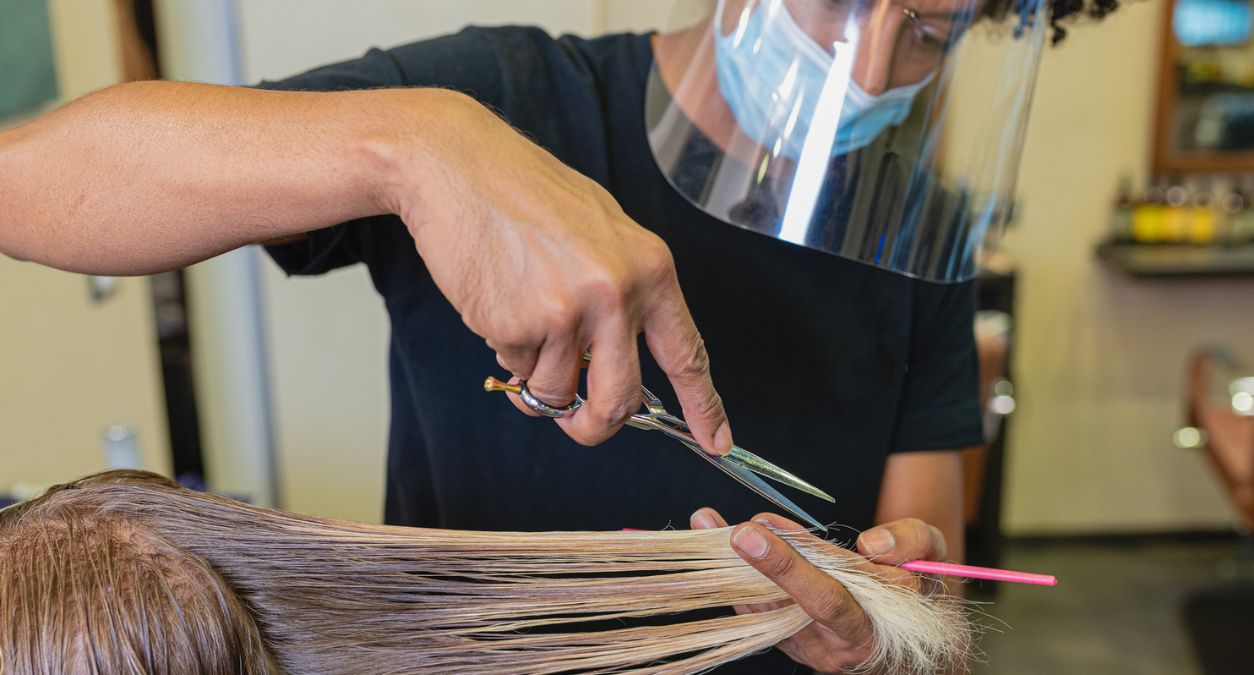While hairdressing might not seem like a high-risk profession, it comes with its own set of health and safety challenges. Hairdressers work with sharp tools, electrical appliances, and potentially hazardous chemicals daily. Prolonged standing, repetitive movements, and exposure to fumes can also lead to chronic health issues if risks aren’t properly managed. According to the Health and Safety Executive (HSE), slips, trips, and falls are among the most common causes of workplace injuries, with salons being no exception.
Beyond personal safety, ensuring a secure working environment is vital for protecting clients. A simple oversight—such as failing to perform a patch test before a colour treatment—can result in allergic reactions, leading to distress for the client and potential legal consequences for the stylist. Personal injury claims can be costly, not just financially but also in terms of reputation. This is why implementing robust health and safety procedures, combined with specialist Hairdressing Insurance, is essential for any professional in the industry.
This health and safety overview for hairdressers will explore the key risks, industry regulations, and best practices for maintaining a safe and professional environment. By understanding these hazards and taking proactive measures, hairdressers can protect themselves, their clients, and their businesses.
Health and Safety regulations in hairdressing
To maintain a safe working environment, hairdressers must follow industry regulations and best practices.
Key Health and Safety Laws
- Health and Safety at Work Act (1974): This law places a duty on employers to ensure a safe working environment for all employees and clients. Hairdressers must comply with health and safety protocols to minimise risks.
- Control of Substances Hazardous to Health (COSHH): Hair products contain chemicals that can be harmful if not handled correctly. COSHH regulations require proper storage, handling, and disposal of these substances to reduce exposure.
- Reporting of Injuries, Diseases and Dangerous Occurrences Regulations (RIDDOR): Employers must report serious workplace accidents, injuries, and occupational illnesses to the Health and Safety Executive (HSE) under RIDDOR.
- Hair and Barber Council: This organisation promotes professional standards and hygiene within the industry, encouraging hairdressers to register for accreditation.
Safe work practices in hairdressing
The best way to avoid hazards in a salon is through prevention. By implementing clear procedures, hairdressers can minimise risks and create a safe working environment.
Risk Assessments
Regular risk assessments are essential to identify and control potential hazards. Employers should evaluate the salon’s layout, equipment, and daily tasks to pinpoint risks such as slippery floors, exposed electrical cords, or poorly ventilated areas with chemical fumes. A written risk assessment should outline hazards, who might be affected, and the steps taken to reduce the risks. For example, if a particular hair dye has a high likelihood of causing skin irritation, implementing a mandatory patch test before use can help prevent allergic reactions.
Emergency Procedures
Having clear emergency procedures ensures that staff can act quickly in dangerous situations. Every salon should have a fire safety plan, including the location of fire extinguishers, emergency exits, and evacuation routes. Additionally, protocols for dealing with chemical spills should be in place, such as providing protective gloves and having a designated area to handle hazardous substances safely. Regular fire drills and emergency response training can ensure that all staff know what to do in a crisis.
Training
Ongoing training is crucial for ensuring that all staff members understand how to prevent and respond to workplace hazards. Training should cover safe handling of chemicals, proper lifting techniques, and how to use electrical tools safely. It should also include customer safety measures, such as checking for contraindications before performing chemical treatments. New employees should receive thorough induction training, while existing staff should have refresher courses to stay updated with best practices.
First Aid
Salons must have a well-stocked first aid kit containing plasters, antiseptic wipes, burn treatments, and bandages. A trained first aider should always be present to handle minor injuries, such as cuts from scissors or burns from styling tools. Having a procedure for dealing with more serious incidents—such as a client fainting or an allergic reaction—ensures that immediate and appropriate care is provided. First aid training should be updated regularly to keep staff prepared for any medical emergency.
Client Safety
A client’s safety is just as important as the hairdresser’s. Patch testing before colour treatments can prevent allergic reactions, while proper consultation helps identify any pre-existing conditions that could affect a service. Maintaining a clean and hygienic salon is essential—sterilising tools, washing towels after each use, and ensuring workstations are tidy can help prevent infections and cross-contamination. Additionally, ensuring that chairs, sinks, and styling equipment are correctly adjusted to each client’s comfort reduces the risk of strain or injury.
By focusing on prevention and implementing structured procedures, hairdressers can create a safer salon environment for both staff and clients.
Get Hairdressing Insurance from Protectivity
*Disclaimer – This blog has been created as general information and should not be taken as advice. Make sure you have the correct level of insurance for your requirements and always review policy documentation. Information is factually accurate at the time of publishing but may have become out of date.
Last updated by






